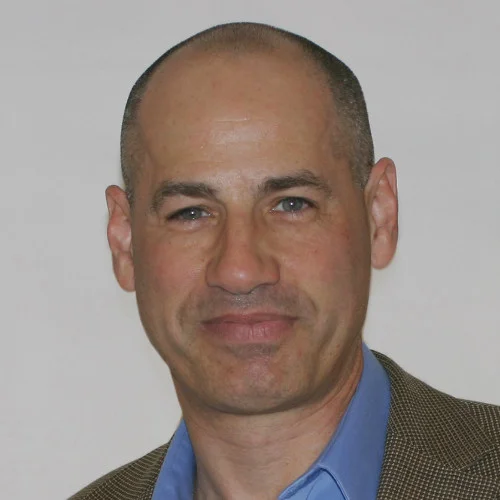In a busy physician’s life, few thoughts conjure as much dread as wasting time in a pointless meeting where attendees are either aimlessly pontificating or complaining. This type of time-sucking meeting is all too common because the organization’s leader or meeting organizer hasn’t done the hard work necessary to make getting together effective. But it doesn’t have to be this way. With a few strategic adjustments, your meetings can become the backbone of your practice’s efficiency and success.
Ad Hoc versus Recurring Meetings
Most meetings should be recurring, aligned with the periodicity of getting things done. Emergencies aside, a well-structured recurring meeting should have a clear goal with associated milestones. Effective meetings can be as short as 15 or 30 minutes weekly, biweekly, or monthly. By investing time in planning these meetings, you’ll save time in the long run and avoid the chaos of ad hoc gatherings.
Setting Meeting Goals and an Agenda
This is where most meetings fall short. Without a clear agenda, the empty space is filled with a single person rambling while the other attendees barely listen. More time down the drain. Following the SMART goal framework and including KPIs for success will help keep the team focused. Start with the preceding items that require correction or improvement before addressing downstream issues.
Here’s an example of an ongoing meeting that exists until the meeting’s purpose is met:
Meeting Name: RCM Optimization Meeting
- Goal: To optimize the revenue cycle by removing the root causes of billing errors and systematizing and measuring key performance indicators of the billing process.
- Milestone 1: Remove causes of claim rejection so that the claim rejection rate is <1% by the end of the first quarter.
- Milestone 2: Optimize patient collections in the office, minimize patient statements to reduce patient aging, and ensure that patients understand their payment responsibilities clearly. Have a patient payment rate of >95% at the time of service by the end of the second quarter.
- Milestone 3: Insurance company aging over 90 days represents less than 10% of total aging by the end of the third quarter.
- Agenda short-term
- Optimize the registration process to ensure insurance information and demographics are correctly captured.
- Collect patient’s email and mobile phone number to enable online interactions and registration before the office visit.
- Attain an insurance eligibility check for over 95% of office visits.
The stuff of the meeting is who is doing what to attain the above goals that occupy the agenda of the meeting.
Attendees: Practice owner, billing manager and staff, front desk manager.
Length: 15 minutes.
Invitees/Attendees: For the above meeting, the relevant leadership should be regular attendees and then stakeholders involved with doing the work should attend optionally depending upon their involvement with the project.
If this is just a meeting between the physician and office manager, then you are likely speaking and working in a silo. It’s better to invite all stakeholders, have clear and transparent communications, and have accountability at the meeting. That way, there is not a single point of failure with an office manager or billing manager. It also avoids the problems inherent in the game of telephone. You thought you communicated clearly with someone, and yet the simple result was not achieved.
This leads to the next attribute of a good meeting: accountability.
Hold Attendees Accountable for Their Assignments:
Without clear assignments between the last meeting and the next, few will hold themselves accountable for getting the work done. Make sure assignments and follow-ups are clear. As the practice’s revenue engine, the physician’s time is best spent with patients, but involving the right people and setting clear expectations is crucial for success. Be clear about what you want done, how it is to occur, and why it is important.
Length of Meeting and Timing of Meeting:
With clear and well articulated goals, a weekly meeting can be completed in 15–30 minutes and progress measured. State the goals, agenda, and interval progress. Share success metrics and acknowledge accomplishments. When the meeting’s purpose is accomplished, it’s time to wrap things up and get to work.
To prevent interruptions, schedule meetings when physicians and employees are not actively involved in patient care. Waiting for someone to attend to a patient causes the entire group to waste valuable time.
How long do we need to continue this meeting?
The meeting can exist until it has achieved its purpose. If the goal is to systematize and optimize the revenue cycle, then the operational meeting for optimization can be discontinued, and the Key Performance Indicators for success can be followed on a monthly basis. If they remain in the optimized or acceptable range, it can be inferred that your system is running smoothly and your time and attention is better spent elsewhere.
What makes a good meeting?
The idea behind Scrum meetings is that they provide the benefits of regular meetings, without the perceived bureaucracy that often causes knowledge workers to say they dislike meetings. Scrum meetings achieve this by being short and to the point. If you want to embrace some of the beneficial ideas about Scrum meetings in your workplace, consider the following:
- Hold regular, short meetings because they’re usually more productive than longer ones.
- Have a clear agenda for each meeting.
- Set a time limit for each agenda point and stick to it.
- Have the meeting led by someone who’s good at keeping things on track.
- Use visual aids and charts where appropriate.
- Keep discussions aligned with sprint goals and objectives.
- Foster an environment of openness and honesty.
A good framework is encapsulated in Agile methodology. The SCRUM guide provides an operational toolkit for getting things done whether it’s software development or optimizing your medical practice. A more detailed description and explanation of SCRUM can be found in Jeff Sutherland’s book, SCRUM: The Art of Doing Twice the Work in Half the Time.
Even if you aren’t using Agile methodology, you could still benefit from knowing what a Scrum meeting is and the essential ideas that make it so popular. For example, rather than basing your schedule around Scrums, consider basing it on milestones. After completing a major part of a project, review the work and get feedback from your team and stakeholders to ensure the project is progressing as well as it can.
Conclusion
Running short and productive meetings can help increase employee morale and improve the employee experience. When you keep everyone informed through successful meetings, you can also help them be productive in their roles.
Start making these changes today and watch your practice thrive.
Boost Your Practice’s Financial Health with Our Expert KPI Guide.

Dr. Lawrence Gordon, MD
He is a practicing Otolaryngologist and the founder of ENT Specialty Care located in Goshen, NY. He is also the CEO and Founder of WRS Health. The software is an all-in-one platform, designed by physicians, providing clinician-centered workflow solutions to continually improve and grow your practice.





 QUICK CHARTING
QUICK CHARTING NOTE
NOTE MEDICATION
MEDICATION PATIENT
PATIENT BILLING
BILLING RISK
RISK MARKETING
MARKETING MIPS
MIPS